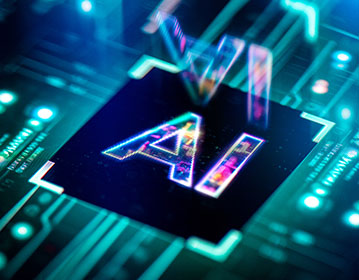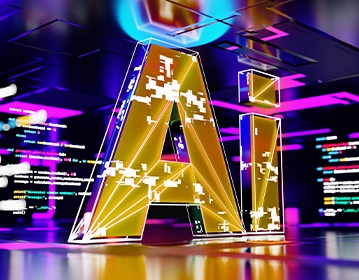
Summary
Business modernization strategies reign as a top priority for executives worldwide. Yet many IT leaders may not fully recognize that their software service models can be barriers. CIOs can modernize software services with digital technologies to accelerate innovation in 2022 and help the business gain competitive advantage.
Analysis
The digital revolution is in full swing. According to a recent Gartner® survey, “Boards have set digital acceleration as a top priority to ensure their enterprises emerge stronger from the pandemic.”1 This mandate impacts more than the business. CIOs must deploy and support a rapidly growing number of new software solutions that can create additional layers of complexity in the enterprise’s application portfolio.
The Challenge
Traditional software support models, tools, and teams were formed around the concept of a single, very large enterprise application suite that was tightly integrated, where change had to be laboriously and rigorously vetted to reduce the risk of breaking the total solution. That model won’t work with today’s digitalized multiproduct, multiservice application portfolios. Nor will it support the speed and pace of change of digital technologies.
An additional complication is that virtual work is increasingly becoming the rule rather than the exception. Short term work-from-home (WFH) fixes that were rapidly adopted due to the COVID-19 global pandemic are becoming accepted as long-term changes to the way that work gets done. Support for virtual work (e.g., virtual events, virtual meetings, virtual troubleshooting) requires technical platforms, tools, applications, and the ability to support it all from anywhere.
The Bottom Line
The legacy enterprise software support model can fall short in supporting today’s environment. Long-term success of any digital acceleration agenda depends on redesigning the software support organization and expanding IT service processes.
But that isn’t enough.
As a part of modernizing application services, CIOs must also advance their IT service automation efforts in order for support services to keep pace with changes happening in the business and to meet evolving customer service expectations. CIOs are finding that digital technologies that have been proven in the business can also be used to accelerate IT outcomes and reduce technology support costs.
Because enterprise applications typically consume the lion’s share of an IT budget, software support is a key place to start taking advantage of digital technologies.
Digital Technologies to Accelerate Innovation
Although a variety of digital technologies can be used to modernize software support, five stand out for their ability to quickly create a positive impact:
- Artificial intelligence (AI)
- Remote support enablers
- Machine learning (ML)
- Collaboration in the cloud
- Automated operators
Importantly, these technologies can:
- Increase agility: Allows services to scale to fit the needs of the modern business
- Reduce service delays: Accelerates problem resolution
- Enable team scaling: Recruits comprehensive software engineering talent
- Improve operational performance: Creates support efficiencies and savings that can be reinvested in innovation and allows IT to redeploy experts to revenue-generating projects
- Simplify support: Gives support experts more access to solutions and gives customers greater ability to self-help
Let’s look at these five technologies more closely.
1) AI Modernizes the Software Support Process
Using AI in software support can best be described as automating the analytical steps that humans typically take when assessing support needs, determining the best solution provider (or possibly the best solution), and smartly monitoring in-process support services. AI can empower software support experts to make smarter decisions and provide faster, better responses to users and customers.
“AI has become a critical investment area for support organizations where speed to resolution is paramount. Using AI tools that intelligently assign the best technicians for each case has reduced our software issue resolution times by 23%.”
— Eric Helmer, SVP & CTO, Rimini Street, Inc.
Examples of AI in software support include:
- Intelligent routing: Uses automation that assesses knowledge about support experts (e.g., skills, availability) to assign service requests to the people who are most qualified and available to work on them.
- Proactive escalation: Uses text analytics to proactively analyze service activity. For instance, natural language processing can capture keywords in a service request’s email traffic for sentiment analysis that shows customer satisfaction levels.
- Case resolution assistance: Given the key context of a case using words and phrases, AI can surface the most similar cases that have been resolved or are in progress in order to quickly determine if a problem has happened before and how to resolve it.
2) Remote support enablement tools bring experts and customers together
Remote support enablement tools are technologies that connect experts to customers. They expand both the reach of experts and the reach of users and customers to access that expertise. Users and experts can be connected around the world and work online anytime and from anywhere.
Remote support enablement tools can provide greater flexibility in hiring experts and in where those experts reside. More than ever, this is enabling a truly virtual IT service organization.
Examples of remote support enablement tools include:
- Privileged Access Management tools: Provides secure connectivity between a client’s system and service experts
- Web-based video conferencing tools: Use the internet to bring support experts and customers together face-to-face virtually to share support information in real time
- Communication tools: Use messaging functionality in, for example, Microsoft Teams to bring support experts and customers together instantly and efficiently
3) ML Adds Depth to Solutions
ML is a type of AI that learns from data in order to predict something or suggest a future action. For software services, this means using automation to learn from prior support requests or support trends in order to anticipate a potential service need or proactively provide a service before an outage occurs. ML can also be used to personalize support services, stop problems before they occur, and improve the customer support experience.
Examples of ML include:
- Predictive support: Automation that uses existing data to find insights and relationships in service requests and then provides service experts with knowledge or solutions that can be proactively delivered.
- Personalized support: Automation that uses past activities and interactions to provide service experts with insights that can personalize interactions with a customer. For instance, identifying that a certain training program might be helpful based on the pattern of support requests.
4) Virtual Collaboration Tools Bring More Expertise to the Table
Collaboration tools support groups of people working on common goals or objectives. In today’s virtual world, collaboration in the cloud replaces physical collaboration tools such as paper, flipcharts, and whiteboards. In software support, virtual collaboration tools allow support experts and customers to get things done quickly, anytime, and from anywhere.
Examples of collaboration tools in the cloud include:
- Virtual screen sharing: Allows the support expert to see and work in a customer’s environment, which improves the expert’s ability to “see and solve”
- Real-time collaboration: Eliminates phone and email “tag” by allowing support experts to connect with customers in real time, making the process of issue assessment-to-resolution faster and more efficient
5) Automated Operators Facilitate Customer Self-Support
Automated operators connect customers to software support knowledge and solutions without the assistance of support experts. They empower customers to quickly resolve application support needs that don’t require deep knowledge or analytical support. They also free support experts to focus on complex requests, which can lower support costs. A strong knowledge base is the foundation for success with self-help.
Examples of automated operators include:
- Chatbots: Allows customers to interactively self-help, which in turn, offloads redundant and common application support services from scarce resources (experts) who are needed to solve complex, high-touch issues
- Automated menu systems: Offloads common service requests by allowing customers to navigate to solutions based on a structured route-map of choices based on predefined symptoms and next steps
Free the IT Team for Innovation
Using digital technologies such as AI, remote support enablers, ML, collaboration in the cloud, and automated operators simplifies IT services and makes them more cost-effective, efficient, and scalable. Doing so allows IT to redirect resources toward accelerating innovation and moving the business ahead in 2022.
For information on optimizing the customer experience by combining the efficiency and speed of digital technology with the intelligence of human expertise and the warmth and personalization of exceptional customer service, see Adopting a “Shift Left” Strategy to Transform Technology Support Services. Also see Use AI to Enhance the Human Connection in IT Support Services.
1 Gartner: “Survey Analysis: Executive Leaders Should Align to Board Priorities for 2021,” 8 February 2021, ID=G00735239










































